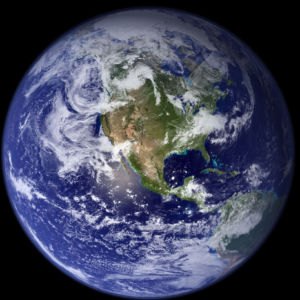On the face of it, there isn’t much to celebrate on April 22, the 50th anniversary of Earth Day. The oceans are choked with invisible carbon and plastic, which is very visible when it washes up on beaches and fatal when ingested by animals, from whales to seagulls.
On land, as a run-up to Earth Day, Mississippi recorded its widest tornado — two miles across — since measurements were first taken, and the European Copernicus Institute said an enormous hole in the ozone over the Arctic has opened after a decade of stability.
But perversely, there’s some exceptionally good news. Because of the cessation of so much activity, due to the coronavirus pandemic, the air has cleared dramatically; cities around the world, including Mumbai and Los Angeles, are smog-free. Also, the murk in the waters of Venice’s canals and the waves from motorboats are gone, revealing fish and plants in the clear Adriatic water.
Jan Vrins, global energy leader at Guidehouse, the world-circling consultancy, was so excited by the clearing that he posted and tweeted a picture taken from a town in the Punjab where Himalayan peaks are visible for the first time in 30 years.
The message here is very hopeful: With some moderation in human activity, we can save the environment and ourselves.
The sense of gloom and hopelessness that has attended a litany of environmental woes needn’t be inevitable. Mitigating conduct in industry and, particularly in the energy sector, can have huge effect quickly; transportation will take longer. Vrins says the electric utility industry — a source of so much carbon — is now almost entirely engaged in the fight against global warming. Just five years ago, he says, they weren’t all fully committed to it.
Another Guidehouse consultant, Matthew Banks, is working with large industrial and consumer companies on reducing the effect of packaging as well as the energy content of consumer goods. Among his clients are Coca-Cola, McDonald’s and Johnson & Johnson. The latter, he says, has been working to reduce product footprint since 1995.
“This is an important moment in time,” Banks says. “Folks have talked about this as being The Great Pause, and I think on this Earth Day we need to think about how that bounce back or rebound from the Great Pause can be done in a way that responds to the climate crisis.”
I was on hand covering the first Earth Day, created by Wisconsin senator Gaylord Nelson and its national organizer, Denis Hayes. It came as a follow-on to the environmental conscientiousness that arose from the publication of Rachel Carson’s seminal book “Silent Spring” in 1962. That dealt with the devastating effect of the insecticide DDT.
Richard Nixon gave the environmental movement the hugely important National Environmental Policy Act of 1969. With that legislation, and the support of people like Nelson, the environmental movement was off and running — and sadly, sometimes running off the rails.
One of the environmentalists’ targets was nuclear power. If nuclear was bad, then something else had to be good. At that time, wind turbines — like those we see everywhere nowadays — hadn’t been perfected. Early solar power was to be produced with mirrors concentrating sunlight on towers. That concept has had to be largely abandoned as solar-electric cells have improved and the cost has skidded down.
But in the 1970s, there was reliable coal, lots of it. As the founder and editor in chief of The Energy Daily, I sat through many a meeting where environmentalists proposed that coal burned in fluidized-bed boilers should provide future electricity.
Natural gas and oil were regarded as, according to the inchoate Department of Energy, depleted resources. Coal was the future, especially after the energy crisis broke with the Arab oil embargo in the fall of 1973.
Now there is a new sophistication. It was growing before the coronavirus pandemic laid the world low, but it has gained in strength. As Guidehouse’s Vrins says, “We still have climate change as a ‘gray rhino’, a big threat to our society and the world at large. I hope that utilities and all their stakeholders will increase their urgency of addressing that big threat which is still ahead of us.”
Happy birthday Earth Day — and many more to come.

